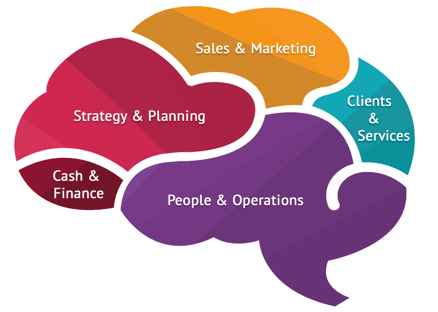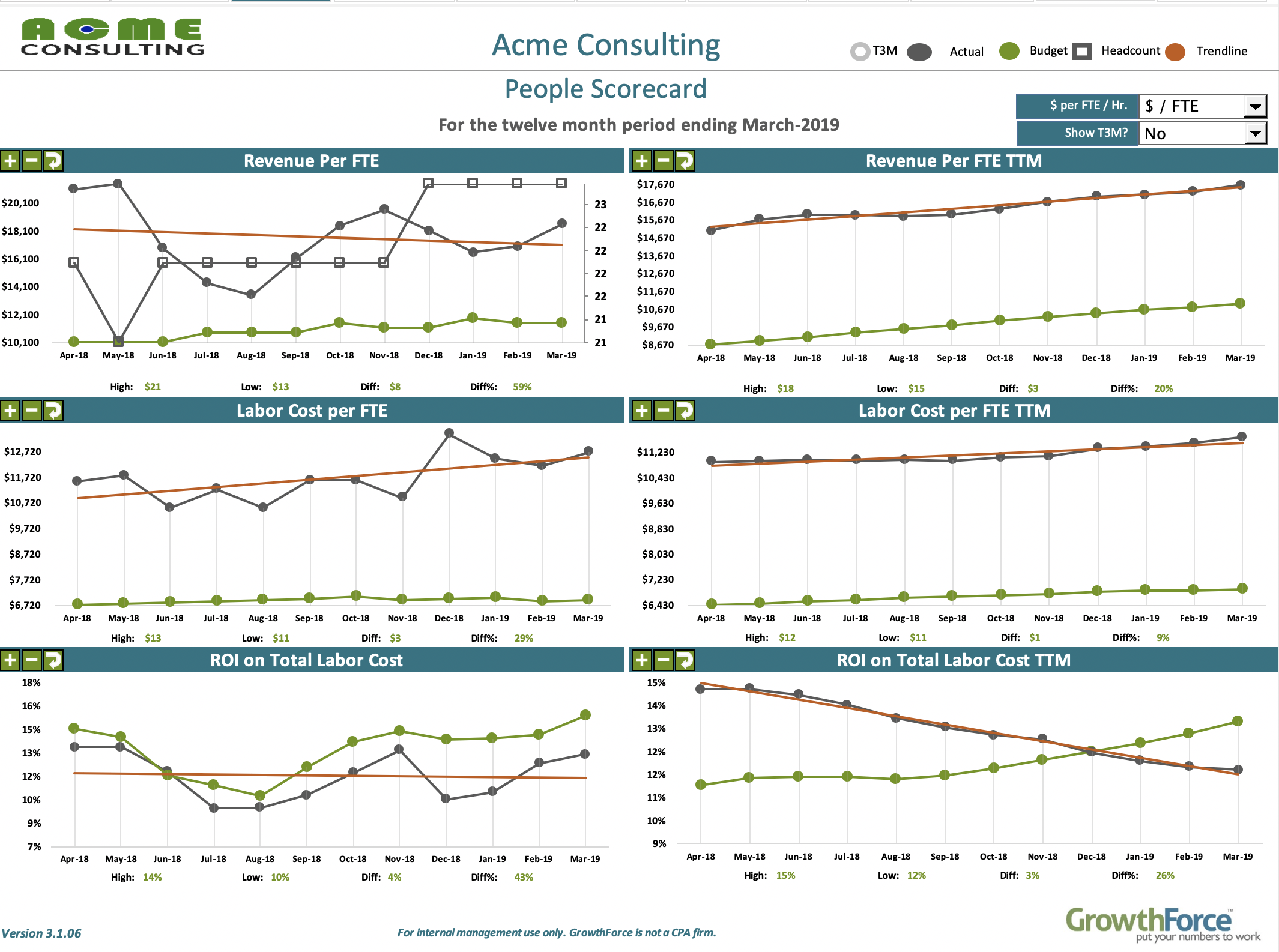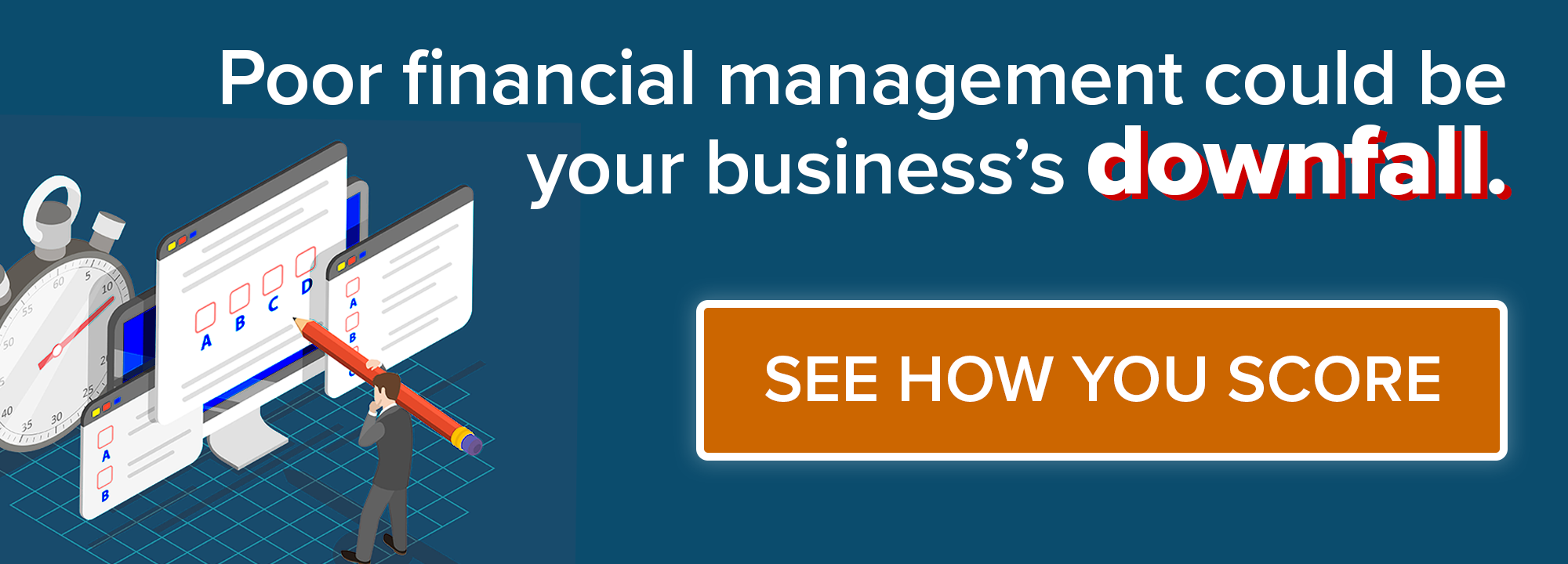In our eBook, The CEO’s Guide to Keeping Score, we address 5 sections of a CEO’s brain to help visualize where, as a strategic CEO, you need to spend your time. Then, we discuss the 5 related scorecards and KPIs we designed to help CEOs get the information they need to make data-driven decisions.
In this blog, we focus on People and Operations and the People Scorecard.
The largest part of a CEO’s brain should be focused on their people.
With service businesses, your business’s ability to make money is directly a function of how well you attract and retain people who your clients will love.
 You do that by recruiting to fit your culture, core values and behaviors because culture creates one of the biggest differentiators between success and failure. With payroll costing an average of 70% percent of a service business’s costs, you must closely monitor the success of your employees, the biggest expense of your business, to understand where your business is today and where it can go.
You do that by recruiting to fit your culture, core values and behaviors because culture creates one of the biggest differentiators between success and failure. With payroll costing an average of 70% percent of a service business’s costs, you must closely monitor the success of your employees, the biggest expense of your business, to understand where your business is today and where it can go.
In companies that profit from their workers’ services, gross profit is directly related to people performance. Strategic CEOs consider employees an asset to the business. Thus, the lower employee turnover rate will help them achieve their targeted profit margins.
→ 80% of turnover comes from bad hires. You'll be able to hire "A" players if you don't have to rush into hiring employees.
People and Operations Questions a Strategic CEO should be thinking about:
- Do I have high-performing teams or do I just have workgroups?
- Do I know who my best-performing people are?
• Who contributes the most to profits? How do I measure that?
• Are my employees as productive as they could be? - Do we know which behaviors are the most successful in our business?
• How do I reward and recognize our best employees, both at work and
at home?
• Do our employees have a personal development plan? - What are the hidden costs of turnover and unengaged employees? Do we
have a morale problem?
• Which employees should be let go and when?
• When should we hire new people and how much can we pay them?
The People Scorecard
This KPI scorecard shows the profit on the investment you made in your people. When analyzing the People Scorecard, CEOs should make sure that the income per hour paid trend line is increasing at an equal or greater rate than the labor cost per hour paid.
That's the secret in a service business - driving productivity, lowering your turnover, and reducing the amount of time it takes for a new hire to be a fully productive employee.
Charts in the People Scorecard
- Income Per Hour Paid
- Labor Cost Per Hour Paid
- ROI on Total Labor Cost Per Hour Paid
Income Per Hour Paid - It shows the total amount of revenue generated from your people and shows the impact of turnover on your company and the company’s efficiency in onboarding new staff.
Labor Cost Per Hour Paid - Total labor cost should include the hidden costs of your people, including overtime, recruiting, training as well as the fringe benefit costs of health insurance and paid time off. The rule of thumb is full-time, salaried employees with 40 hours of work per week are considered one FTE.
ROI on Total Labor Cost - the percentage of net income divided by the total labor cost.
Additional/Advanced People KPIs
- Net Income per Employee – this metric shows how well you manage the ratio of your people and your profits
- Compensation per employee – in high performing teams compensation per an employee may actually increase in companies that share profits with the people who causes profits.
- Compensation as a % of Revenue – this shows how much income you
earn for each dollar of pay in salary. It allows the company to determine if
personnel costs are in line with organization goals, industry benchmarks and
business plans.
Keeping Score Matters
There’s a lot to be said about keeping score relating to what’s important and assessing your KPIs in conjunction with your people. Clearly, there are a multitude of questions you should be asking as a CEO. The real difficulty, however, comes to implementing the right strategy based on the determined KPIs.
Our Keeping Score eBook describes a framework that helps CEOs make data-driven decisions especially for service businesses. No matter what size your business is, you can take actionable steps to help lower employee turnover and drive profitability in your organization.


.jpeg?width=723&height=405&name=AdobeStock_603737506%20(1).jpeg)


